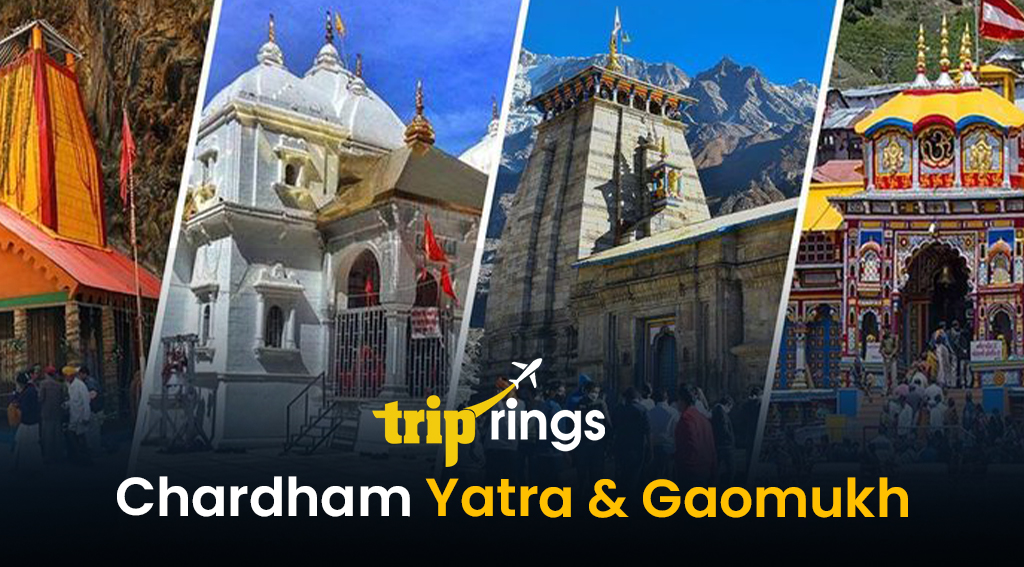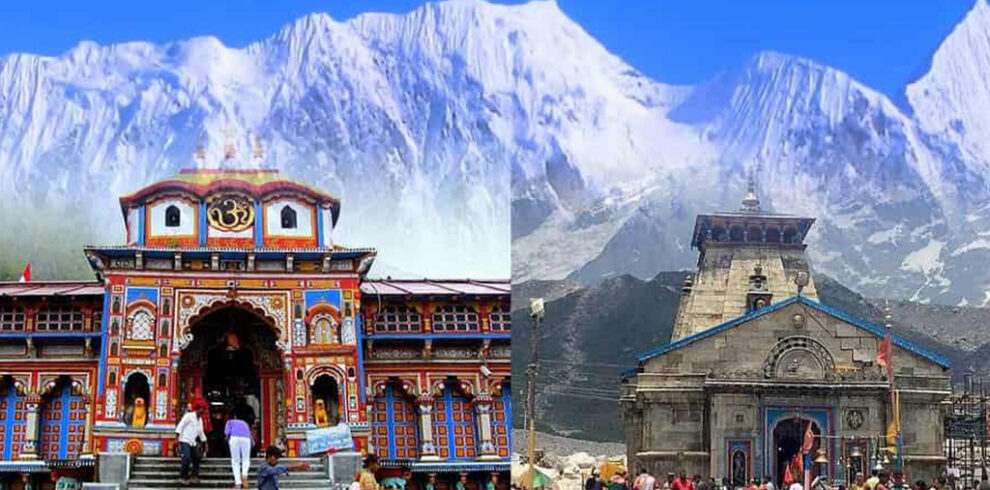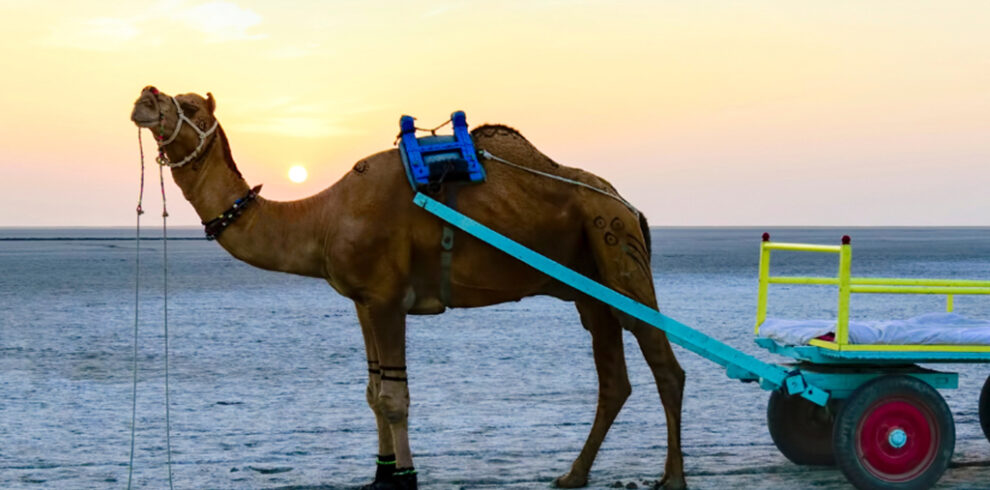Overview
This Chardham Yatra with Gaumukh is a sacred pilgrimage across the revered sites of Uttarakhand, including Yamunotri, Gangotri, Kedarnath, Badrinath, and Gaumukh—the source of the holy Ganges. This spiritual journey allows devotees to experience religious traditions, majestic Himalayan landscapes, and the peaceful surroundings of Uttarakhand’s sacred rivers and temples. The yatra includes scenic drives, trekking, and immersive religious experiences, making it a profound and life-changing pilgrimage.
Highlights
- Haridwar: Ganga Aarti at Har-ki-Pauri Yamunotri Dham: Cook rice in hot springs, holy dips Gangotri Dham: Darshan at the temple Gaumukh: Source of the Ganges Kedarnath Temple: Sacred Shiva shrine Badrinath Temple: Dedicated to Lord Vishnu Rishikesh: Temples and landmarks like Laxman Jhula
Itinerary
Your journey begins with your arrival at Delhi Airport or Railway Station, where you will be greeted and transferred to Haridwar (230 km, 6-7 hours). Upon reaching, check into your hotel, and in the evening, you will attend the sacred Ganga Aarti at Har-ki-Pauri. Enjoy an overnight stay at your hotel in Haridwar.
On Day 2, you will drive to Barkot (210 km, 7-8 hours) via Dehradun and Mussoorie, stopping at Kempty Falls for a brief visit before continuing to Barkot. After checking into your hotel, enjoy a peaceful overnight stay.
Day 3 is dedicated to the Yamunotri Dham. You will drive to Jankichatti (36 km) and then trek 6 km to Yamunotri. Here, you can cook rice in the hot springs as a religious offering and take a holy dip in Jamunabai Kund before having darshan of Yamunaji. Afterward, return to Barkot for an overnight stay.
On Day 4, you will drive to Harsil (170 km, 7 hours), a scenic route along the Bhagirathi River. En route, visit Gangnani for a holy dip in its hot springs before continuing to your luxurious camp in Harsil for an overnight stay.
Day 5 takes you from Harsil to Gangotri (30 km) for darshan at the Gangotri Temple. After prayers, begin the trek to Bhojbasa, passing through the beautiful Chirbasa forest. Set up camp by the river and enjoy the stunning views of the Bhagirathi Peaks. Dinner and overnight stay will be in tents at Bhojbasa.
On Day 6, you will trek 4 km from Bhojbasa to Gaumukh, the source of the holy Ganges. After offering prayers and exploring the area, return to Bhojbasa or Chirbasa for dinner and an overnight camp stay.
Day 7 begins with a trek back to Gangotri, followed by a drive to Uttarkashi (100 km). Upon arrival, check into your hotel for an overnight stay.
On Day 8, you will embark on a long drive to Guptkashi (220 km, 8-9 hours). After checking into your hotel, you can relax for the night.
Day 9 starts with a drive to Gaurikund, where you will begin your 14 km trek to Kedarnath. Along the trek, you can opt for ponies or palkis (at your own cost). After arriving in Kedarnath, check into your hotel and visit the sacred Kedarnath Temple. Overnight stay in Kedarnath.
On Day 10, after morning darshan, trek down to Gaurikund and drive to Rudraprayag (75 km, 3 hours). Check into your hotel and enjoy the night in this picturesque town.
Day 11 brings you to Badrinath (165 km, 7 hours). After checking into your hotel, attend the evening aarti at the Badrinath Temple, followed by an overnight stay.
Day 12 begins with an early morning visit to Taptkund for a holy dip, followed by darshan of Badrivishal. You can also visit nearby sites like Mana Village, Vyas Gufa, and the “Mukh” of the Saraswati River. Later, drive to either Joshimath, Pipalkoti, or Kirtinagar for an overnight stay.
On Day 13, you will drive to Rishikesh (255 km from Joshimath, 210 km from Pipalkoti, or 105 km from Kirtinagar). Rishikesh is a revered spiritual town on the banks of the Ganges, surrounded by the Shivalik range of the Himalayas. Visit famous temples and landmarks like Laxman Jhula, Ram Jhula, and Triveni Ghat before checking into your hotel for an overnight stay.
Day 14 concludes the yatra with a drive back to Delhi (250 km, 7-8 hours). Upon arrival in Delhi, you will be transferred to the airport or railway station for your onward journey.
Cost
The Cost Includes
- Accommodation:
- Hotels and camps as per the itinerary, with breakfast and dinner included.
- Transportation:
- All transfers by private vehicle from Delhi to Haridwar and throughout the journey, including all sightseeing.
- Guided Tours:
- Experienced local guides for temple visits and treks, providing spiritual insights and historical context.
- Permits and Fees:
- Necessary entry fees for temples and trekking areas, as well as any local permits required for the journey.
- Exclusions
The Cost Excludes
- Meals Not Specified:
- Lunches and any meals not mentioned in the itinerary are not included.
- Personal Expenses:
- Expenses such as snacks, beverages, laundry, and other personal items are not covered.
- Trekking Costs:
- Costs for ponies or palkis (porters) for the Kedarnath trek, which are optional and at the traveler’s expense.
- Travel Insurance:
- Personal travel insurance covering health, accidents, and emergency evacuation is not included and is highly recommended.
FAQs
Annapurna Base Camp is a Grade B or a moderately difficult trekking route. So any fit person can do this trek, even if you do not have any previous experience. You should be aware of what to expect and mentally prepare for it. Then, as long as you will too, you can.
On average, you walk about 4 to 6 hours per day. One or two days can be as less as 3hrs and one or two days can be as long as 7hrs.
The highest altitude reached is 4190m. This is the elevation of Annapurna Base Camp. ABC is the highest we will climb in this trek.
Yes, you can charge batteries en route. Charger should be brought. There are hot shower facilities as well. You may have to pay a certain amount for both ($1-$2). Negotiate. Also, a hot water facility could be free at a lower elevation.
No. There are no ATMs on this trek route. You will have to draw enough cash in Pokhara or Kathmandu. There are a number of ATMs in these cities. Everything is paid in Nepali rupees. So money should be exchanged before the start of the trek.
Yes. The Internet can be accessed in most places. Sometimes, there might be some technical problems. The Internet in Nepal is not as fast as you are used to and at times you can just lose connection.
Not really. It depends on you. If you want, ABC trekking can be done independently. You could hire a guide and a porter by yourself instead of going through an agency or not hire a guide at all. Although, not having a guide can be a little problematic during the offseason.
It really depends on you. Is it your first time in Nepal? How confident are you of being able to find your way around? How pressed on time are you? If you go through an agency, it will be costlier but everything will be planned. You will only have to come, trek and return.
For the Annapurna region, pay for guides range from $20 to $30 per day and porters take $15 to $25 per day.




